 According to Ayurveda, we have access to six different tastes in our food, drinks, and herbal medicine. These tastes include Sweet, Sour, Salty, Pungent (spicy), Bitter, and Astringent. It is vital for our health that we get a balance of each taste in our daily diet and specifically each meal. Why is it so important to get all of these flavors in our diet? Each flavor possesses different properties, actions, and health benefits while also playing an essential role in the digestive process.
According to Ayurveda, we have access to six different tastes in our food, drinks, and herbal medicine. These tastes include Sweet, Sour, Salty, Pungent (spicy), Bitter, and Astringent. It is vital for our health that we get a balance of each taste in our daily diet and specifically each meal. Why is it so important to get all of these flavors in our diet? Each flavor possesses different properties, actions, and health benefits while also playing an essential role in the digestive process.
Each taste arises from two of the five elements. Therefore their unique properties will reflect their predominant elements, and will act on the body and the three doshas accordingly. For example, the sweet taste is manifested through the earth and water elements. These are the same elements that make up Kapha dosha, and therefore the sweet taste will increase Kapha (remember, like increases like). This taste will also increase the qualities of heavy, sticky, slimy, dense, slow, cool and dull; as these are the qualities the earth and water elements possess. Alternatively, since Vata carries the opposite qualities and elements, the sweet taste (in the proper administration) is very balancing and grounding for Vata disorders.
The moment food comes into our mouth, taste is the first action that takes place and the digestion process begins. The saliva (bodhaka kapha) contains an enzyme that begins to break down carbohydrates, before we even swallow. Once a taste has been perceived by Prana Vayu, a signal is sent to the brain. The brain then sends a signal to the gut allowing it to begin secreting the specific enzymes that will be needed for proper digestion. This is a major reason why we should always eat food with our full attention and awareness, tasting each bite. This is also why we must take our herbs in a pill or capsule form that will prevent the taste; and therefore will not allow the proper digestion, absorption and assimilation, weakening their healing properties.
I wanted to share with you the vital importance of the six tastes and how to obtain them in a healthy way into our diet through proper foods and herbs. Please note that the health benefits listed are only regarding proper use and administration. Although we all need the six tastes in our daily diet, the specific amounts and sources will vary according to our unique constitution (Prakriti) and any current imbalances (Vikriti) occurring. In the case that there is misuse of the tastes, then the health benefits diminish and are replaced with negative effects. For example, if a Kapha individual takes in too much sweets, mainly from refined white sugar; this can lead to obesity or diabetes, negating any positive effects of the sweet taste. So please use awareness and always keep in mind – “One man’s medicine is another man’s poison.”
Resource and Photo Credit (Tongue Drawing): Textbook of Ayurveda : Fundamental Principles, Volume One By Dr Vasant Lad

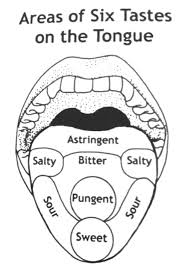

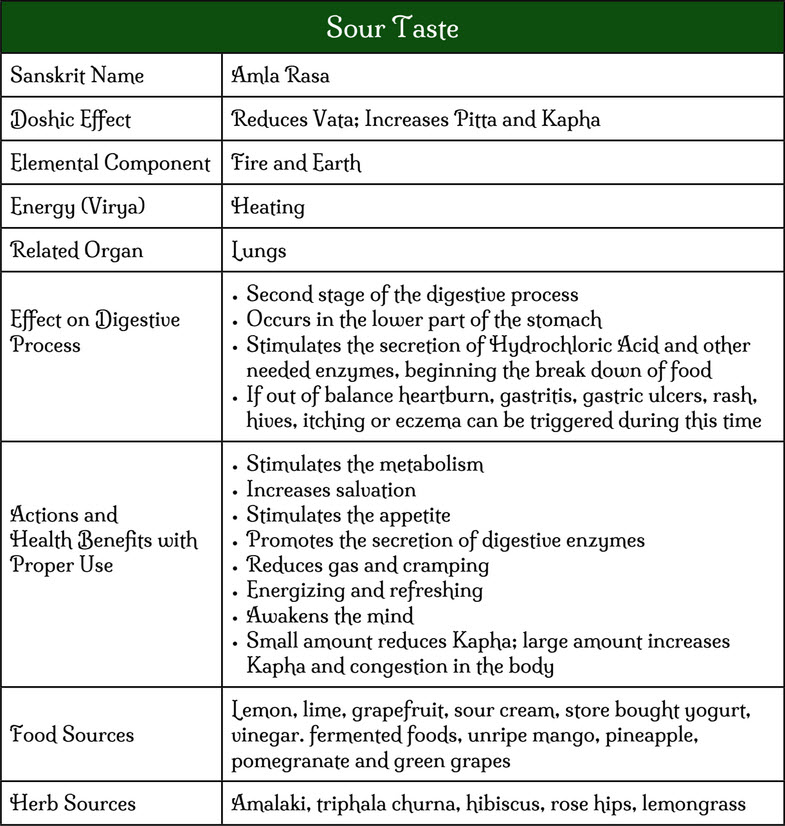
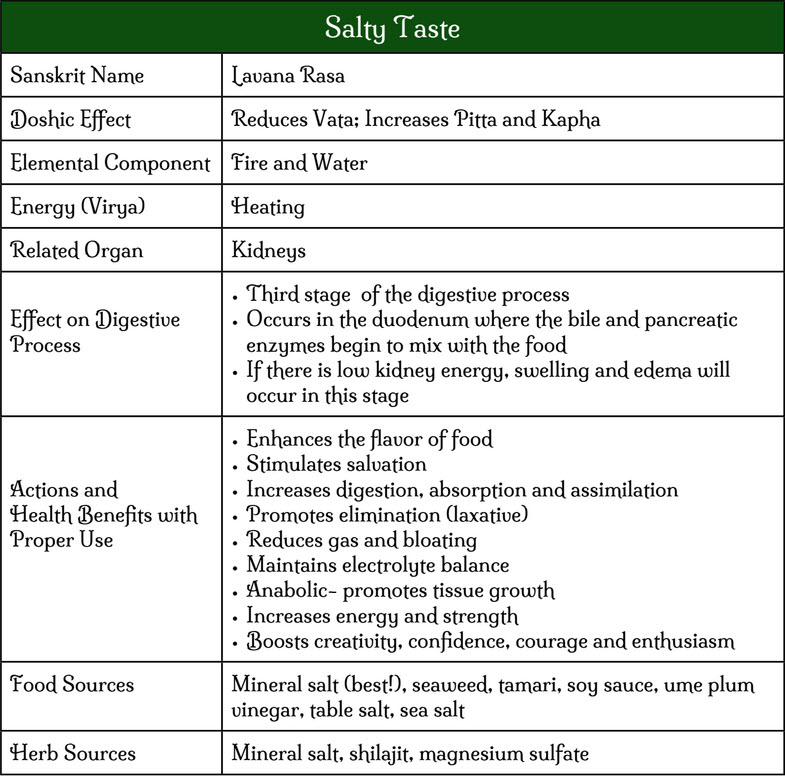
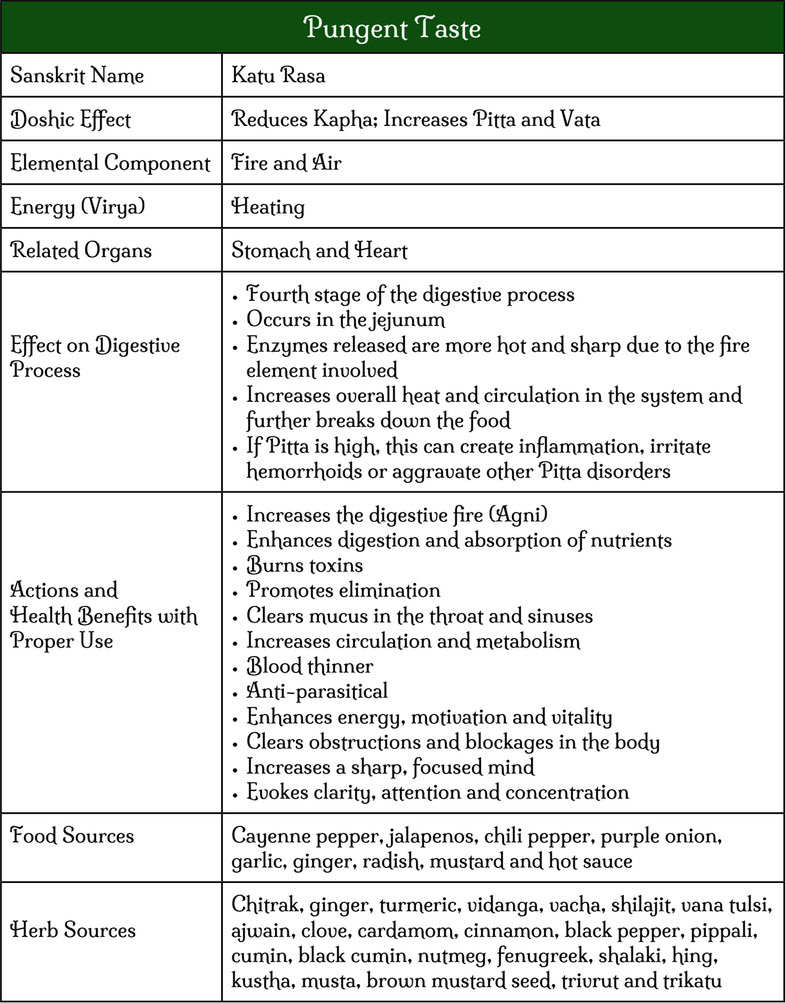
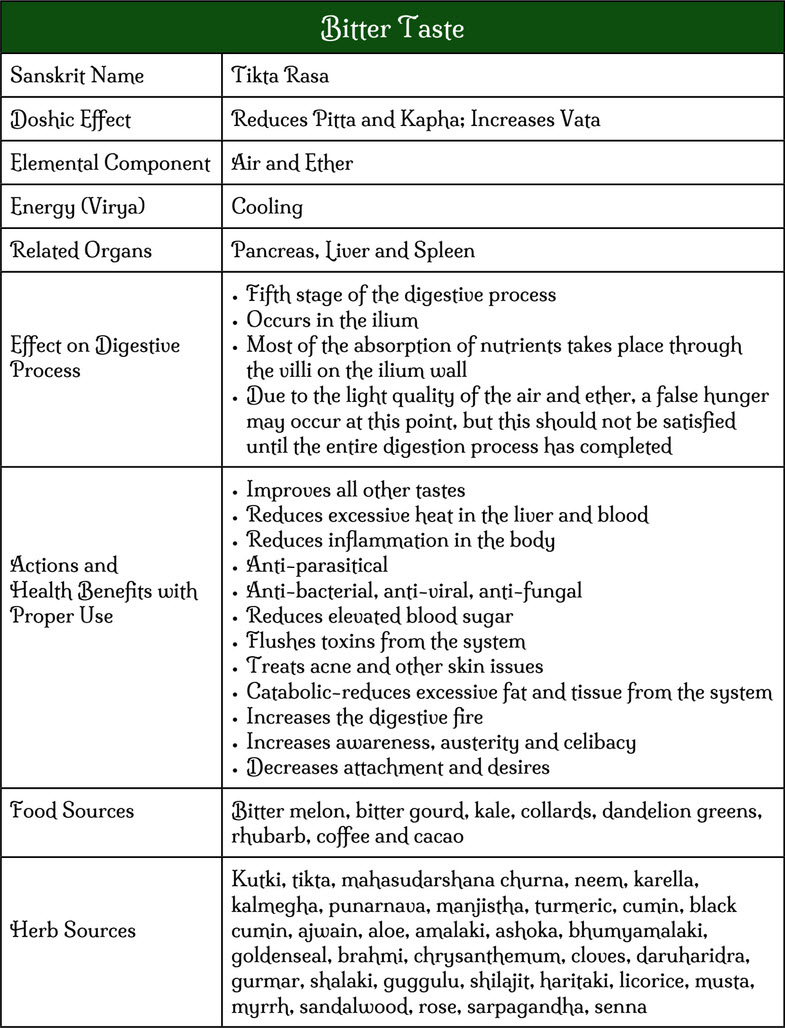
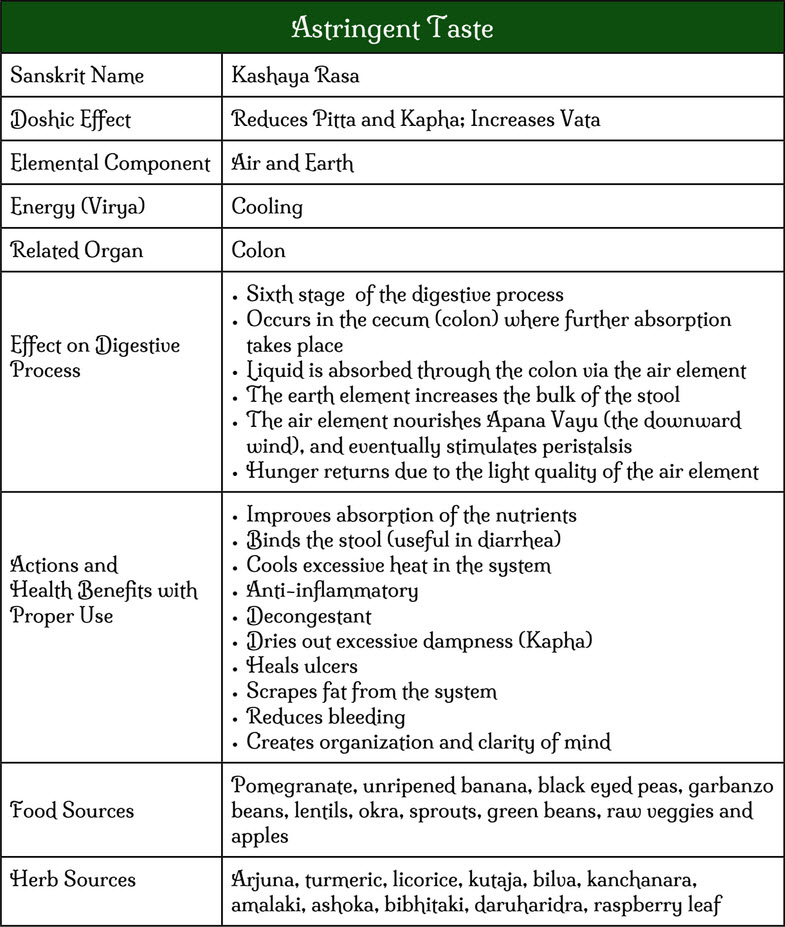

It was nice to see a detailed view of the diet. The concept you have given about 6 taste and 10 best foods to suit all body types is really good thing you have shared. A valuable information.
Thank you for the kind words! I am happy you found it useful… Namaste, Danielle
thank you so much for your detailed outline of the 6 tastes of a Ayuvedic diet – incredibly helpful – from a fellow Coloradan.
Cindy
Hi Cindy,
Thank you for writing in! I’m glad you are finding this article useful! It is so important to acknowledge the six tastes and even more essential to make sure we are getting them in our diet each day!
Hope you are staying warm and cozy on this cold, snowy CO day:)
Namaste,
Danielle